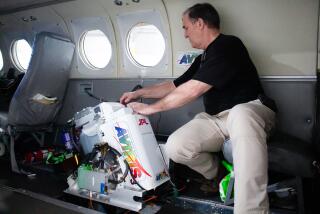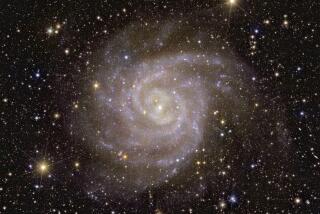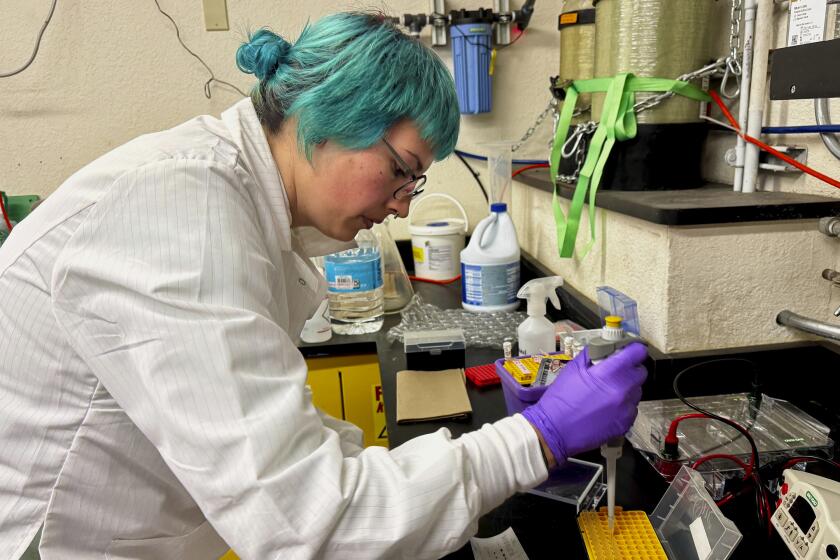Dark Energy Camera starts snapping; just 300 million galaxies to go
- Share via
The Dark Energy Camera, a $40-million piece of equipment that represents a pinnacle of astronomical research, is now peering into the reddest reaches of the universe.
Last week, the camera, a product of the Dark Energy Survey, saw “first light,” said Joshua Frieman, director of the survey.
“That’s a major milestone,” Frieman told the Los Angeles Times in an interview Tuesday, “because it lets us see that the whole thing is working” and soon will be cataloging a vast range of the night sky from its vantage point in Chile.
SPACE QUIZ: Blue moons and more
The point of the research is to look up and out of the Milky Way, said Frieman, also a scientist at Fermilab and an astronomy and astrophysics professor at the University of Chicago.
Over five years, the survey will create detailed color images of one-eighth of the sky, picking out and measuring 300 million galaxies, 100,000 galaxy clusters and 4,000 supernovae, as Arizona’s National Optical Astronomy Observatory put it.
NOAA calls this camera “the most powerful sky-mapping machine ever created.”
A combination of factors makes the Dark Energy Camera unique, Frieman said. First, there are its 570 megapixels -- although, he said, that number sounded more impressive eight years ago when the project began. Some other cameras may have slightly more megapixels, he added, but they can’t match the so-called DECam for field of view. The mega-wide field captures a large swath of sky. But all that wouldn’t matter much without the camera’s ability to detect red light.
“The farther away a galaxy is, the redder its color is,” Frieman said. “The universe is expanding. More distant galaxies are moving away from us more rapidly.” The result is called redshift, a shift to the red end of the visible spectrum of light when observed from the Earth.
PHOTOS: Awesome images from space
“The sensors in this camera were especially designed ... to be really excellent sensors of red light,” Frieman said.
For the next couple of months, there will be a variety of tests done on the camera; it will be tweaked and tuned up and adjusted to provide the “best possible, most crisp images,” he said. “Toward the end of the year, we’ll start the survey proper, which will last for about five years.”
The Dark Energy Survey is a collaborative effort involving more than 20 organizations and 120 scientists. The mission includes probing the nature of dark matter, which a post on The Times’ Science Now blog last week explained is “the mysterious and poorly understood force that scientists have proposed is somehow causing the universe to expand at an accelerating rate.”
The camera will take pictures about 105 nights out of the year, from September through February, which is peak time for seeing the section of space that the survey is most interested in, Frieman said.
The survey pinpointed the spot in the Andes of Chile as the prime place for its mapping effort. The skies are cloudless about four out of five nights, Frieman said, the atmosphere is calm, the region is remote, and prevailing winds move gently over the tops of the mountains.
The early testing phase of the equipment seems to be going very well, Frieman said. And with the Dark Energy Camera snapping 400 images each night, that means the promise of a flow of new, exciting images of deep space.
ALSO:
Endeavour will do flyovers on its way to L.A.
Human sperm have four different swimming strokes
A toothbrush fix and a new record is set at the International Space Station
Join Amy on Google+. Email: [email protected]







